Last Updated on June 20, 2024 by Michelle
Nature Studies have always been an intimate, intricate part of our family. First, as part of our elementary years of homeschooling, but then as a part of a family heirloom that my teen daughters still add to today, almost 2 decades after it all started. Read on if you’d like to know more about our family’s simple idea that is not only educational but invaluable (well, at least to us). Scroll to the very end if you’d like to know how you can use this painless educational idea for your family.
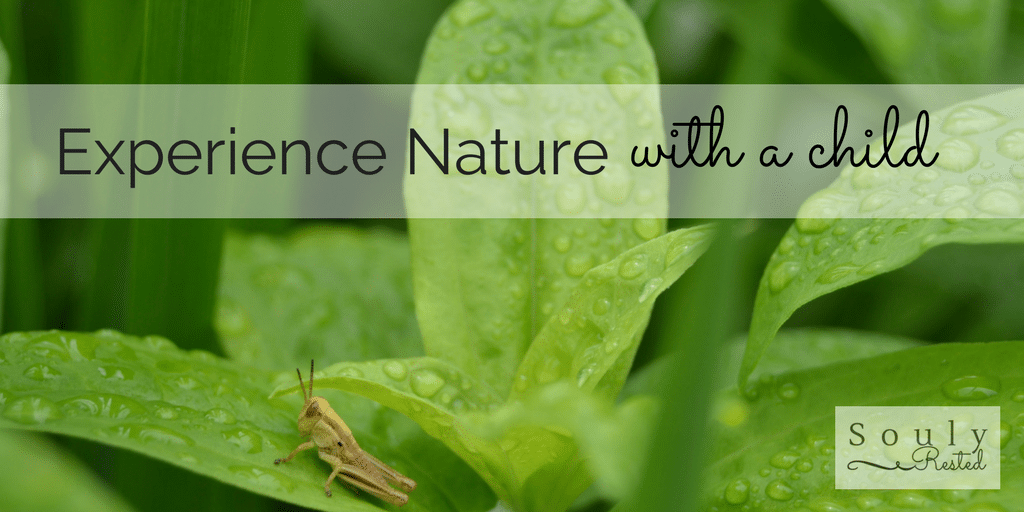
DISCLOSURE: This post contains affiliate links. ♥
Why is my daughter writing about cookies?
My daughter scrawled across the top section of the paper: She is a female, because males only grow to 1.5.” She is 2.”
Today’s subject of writing? Cookies. Not flour and gooey chocolate chips, but yellow thighs and rough gray spots, her beloved, newest ectothermic friend.
The friendship began days ago… “I found Cookies in the outdoor shower… She was chilling out, because she is nocturnal.”
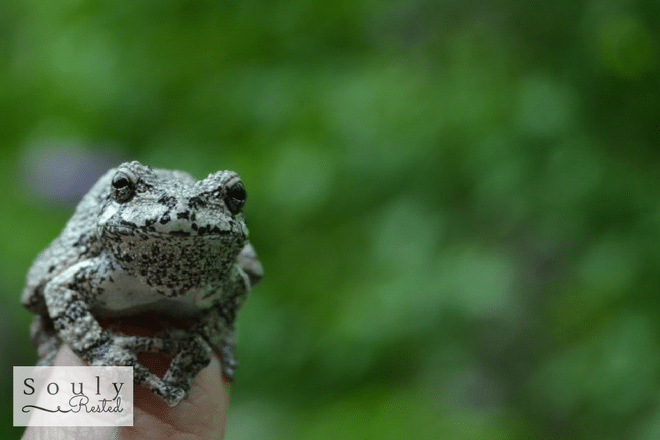
Her hand quickly scribbles the details of her first encounter with the gray tree frog. Then she clicks through the tabs open on the computer in front of her, making sure she has her fact correct before thoughtfully writing a simile. “Her mating call sounds like a persistant bird’s song.”
She pauses a few seconds to contemplate her strong adjective, but this isn’t writing class, so I don’t suggest a stronger verb or correct her spelling. (She doesn’t know it, but “persistent” has been added to her spelling list for the fall.) When the screen isn’t revealing the next particular detail she is looking for, she flips through the bookmarked pages of the nearby book, beside her breakfast of generously buttered raisin toast.
I read along and warm my hands on my tea cup, on the rather brisk New England morning, as the cool June breeze carries faint scents of honeysuckle when it silently dances through the kitchen door.
What’s this book my family loves so much?
She is eagerly writing the newest page in one of our family’s most valuable books.
It’s summertime, not a school morning, and this was her idea. She treasures this book and loves being an author for it. The book has been in the making for 13 years, and I hope to still be adding to it decades from now.
This eventual tome materialized one afternoon under a bright blue Delaware firmament, the year my oldest daughter, Logan, was in Kindergarten. The one who dissected bleeding heart blooms and dreamed of becoming a ballerina. The one who now builds portable nuclear detectors and is studying Mechanical Engineering. She’s the one who found a bizarre caterpillar in the fields beside the zoo. She had to know more. Its name. What it would become.
In the days before high-speed internet and fact-filled websites, my daughters and I paraded to five local libraries, scanned every insect ID book we could find, and finally discovered, quite to our chagrin, that the strikingly amazing larva would turn into a bland, brown White-marked Tussock Moth.
How did we put our Nature Studies book together?
We created a page about our findings and put it in a simple, white, plastic notebook. We figured there would be a few more insects to discover that spring, and maybe we’d pen a few more pages for our Nature Studies. Today, my two youngest are still eagerly adding to our cherished book, in a new backyard, under crystal New Hampshire skies.
The book’s cover—boldly announcing “Our Backyard”— is a faded chalk drawing of the path in our yard of yesteryears, in Logan’s Kindergarten days, in her Kindergarten style.
We never thought this notebook would take on a life of its own. Truly, I had no idea Nature Studies would be such a treasured activity that would become so important to our family.
If we had known our Backyard Book would still be a living book, 13 years after its conception, we wouldn’t have salvaged old office dividers, rewriting our titles over the pre-printed ones. We wouldn’t have squeezed all our extra categories under our fifth tab, but added new tabs with care.
But I will never alter it. Truly, I adore my youngest’s first page about the dandelion, completed almost a decade ago.
Some things we learned today about gray tree frogs?
In captivity, they can live more than 8 years.
They change colors, ranging from bright green to pale white, to dark brown, depending on the temperature, humidity, and light. (But they are, as their name alludes to, typically gray.)
They eat (among other things) crickets and mealworms (thus, we’re reading Pet Bugs–see below–which has chapters on raising both).
A large, female gray tree frog can eat pinkie mice!
If you like the idea of a Backyard Book, or if you’d just like some free resources to help you get started on this 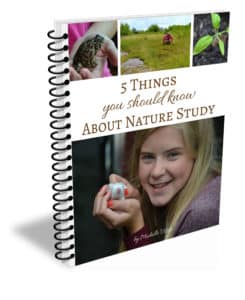 idea of Nature Studies, you’ll love my book, 5 Things You Should Know About Nature Study.
idea of Nature Studies, you’ll love my book, 5 Things You Should Know About Nature Study.
Sign up here and download it right away. You’ll also enjoy instant access to my complete Resource Library, including multiple ID pages to help you start your own heirloom Backyard Book today!
Was today’s page, the one about our chameleon-like frog, imperfect, with grammatical errors? Yep. But it shows, quite obviously that my daughters long to know more about our amazing, creative God–through His fingerprints that are ingrained in His beautifully artistic creation. It is obvious despite our worn, disorganized, hand-me-down, and mistake-laden pages. Just like He is obvious despite–no because of–our own failures from day to day. We so often mess up, even when we think we’re doing a good thing. Yet once in a while, amidst our errors, we wind up making something amazing that just may be priceless for eternity.
That’s when God’s providence and love is the most beautiful. Amidst our imperfections.
We put away our efforts and clean up our breakfast dishes, and she opens the front door, to let the warm sun stream in the front hall. Then, with her discovery there, a new page begins*…
“The more I study nature, the more I stand amazed at the work of the Creator.” –Louis Pasteur
Nature Study Books We Love
For nature study anywhere in the U.S., I highly recommend ANY National Audubon Society field guide. Find the ones you’d enjoy for your part of the country. If you’re in New England, my favorite recommendation for all things nature study is Naturally Curious, by Mary Holland, but that is very specific to the New England region.
| | | |
Products we love for Nature Journaling or adding to our Backyard Book
| | | |
|
* If you’re dying to know, before I get around to writing an entry about the beautiful “pink-lemonade” moth (as my daughter aptly dubbed it), it’s a rosy maple moth. More to come about that beauty on another day.
PIN this for later! Just hover over this image for the Pinterest logo.–>
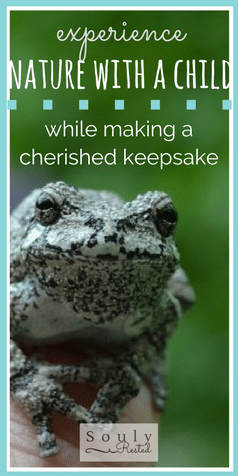
Many readers often ask what camera I use to take the images you find here on SoulyRested. I love my Nikon; you can read more about my camera on my Resources page and even purchase your own here.
Glance at my Resource Page if you’d like to get a glimpse of all the supplies I use and recommend for everything from gardening, to homeschooling, to chicken care, to nature journaling, to maple syrup making.
I’d love to connect!
To find me in some other neck of the woods, just click any (or every!) icon below:
And please follow along!
Please take a second to follow along here on SoulyRested to catch up on a few of my memorable mishaps, discover fascinating things about my centuries-old farmhouse, glean a little parenting/homeschooling insight from this momma who’s been failing at the effort for almost 2 decades, or enjoy the inside scoop on the secrets other legit homesteaders might not tell you.
I hope my focus always encourages you, because simple joys require hard work. Let’s face it, we all need all the encouragement we can get! As soon as you subscribe (in the box at the end of this post), you’ll have immediate access to my Resource Library, including my FREE EBOOKs, and amazing recipes for things like whoopie pie cookies, maple sap switchel, and my grandmom’s perfect pie crust.
If you already ARE a subscriber, just hop over to the Resource Library here and enter your personal password. (If you don’t remember your password, no fear, we always include a personalized reminder in every weekly-ish email, “Hard Work, Simple Joys.”)


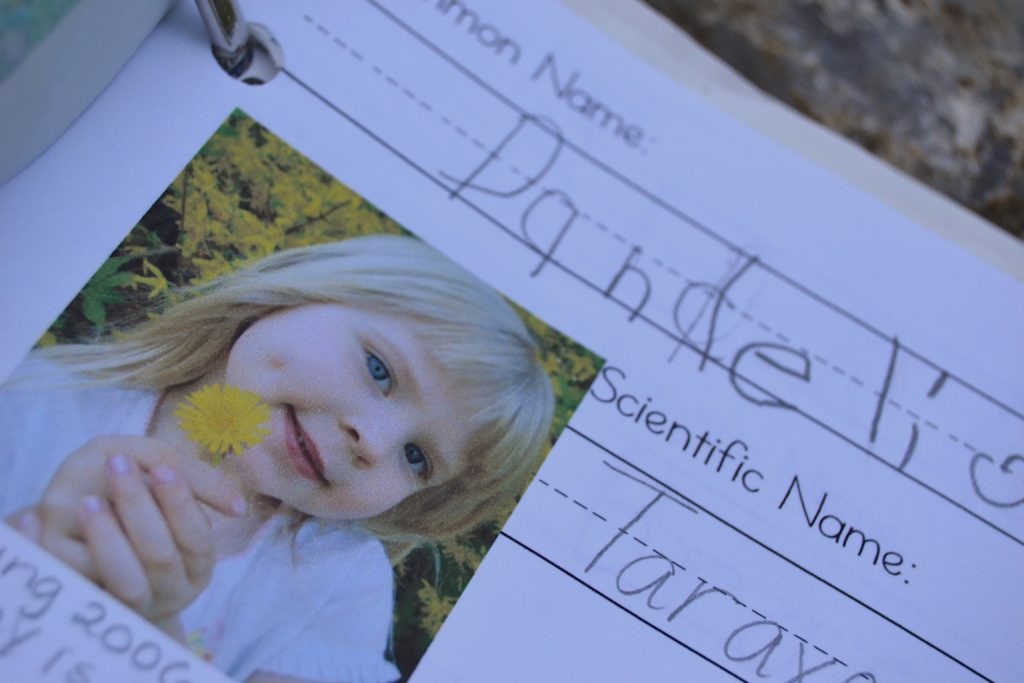
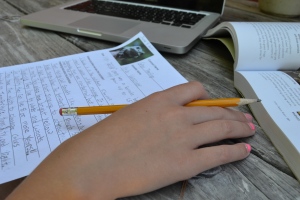
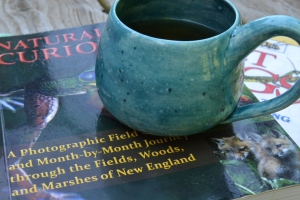


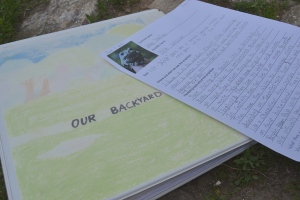
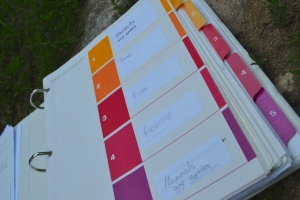
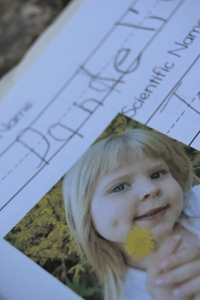
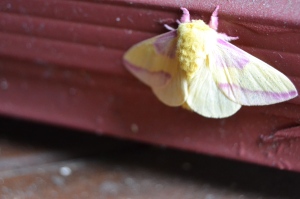





Wow! How very special to still have this notebook going after all of these years! Very inspiring!
Thanks, Christa. Our Backyard Book holds the status of a family heirloom to me. Someday I may have to make 4 copies of it all, so every girl can have her own copy. The only hard part to that is all the 3D additions to many pages, dried blooms, butterfly wings, bird feathers, etc.
The journal is wonderful! Something they will cherish always. How did she come up with the name “Cookies” for the frog?
Glad you asked, Laura, because I love the answer: “Cookies” is the title of our favorite Frog and Toad children’s story. Being such an awesome frog, he deserved to be named after an awesome amphibian anecdote. 🙂
That really does sound like a treasure. Their children may add to it someday, at the very least they’ll delight in seeing what their parents did when they were their age. I think this is a great idea, and not only for homeschoolers. It’s something grandparents can do with visiting grandchildren, too.
I recognized the pink and yellow moth right away! I was ID’ing a yellow moth last week and came across the rosy maple moth in my research. 🙂 (Mine was a male io moth.)
This is such a lovely post! My granddaughter and I do some nature study when she’s here in the summers, and we raised monarchs from caterpillar to butterfly one year. We have a few papers lying around along with those of my homeschooled children; I wish I’d thought to put them all together in a notebook. And as always, I love your photos.
Oh my goodness! I absolutely love this. I’m homeschooling a Kindergartner and preschooler right now and we are just getting into journaling. What a wonderful idea and one that I will definitely start to employ.
I am so glad you found this post, Melissa. It sounds like it’s truly perfect for you! Please subscribe, if you haven’t already, so you can have full access to all my printables and the booklet to help you get started. For now, you’ll want to fill out the pages of your Backyard Book yourself, after you learn neat facts together with your children. They could get involved by drawing a line showing how long an insect or a flower petal is or “draw” what they found. I’m working on writing a complete book of how our family assembled our Backyard Book, including multi-age-appropriate printables for every nature study imaginable. I’m hoping to be able to publish it this year.